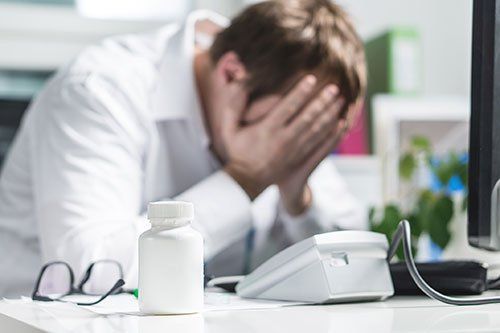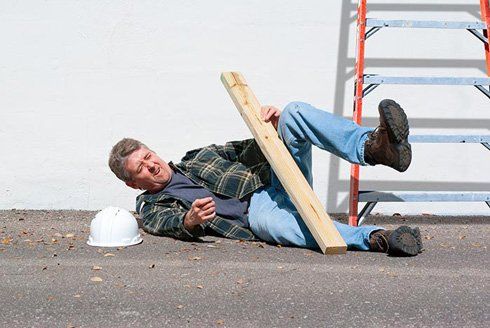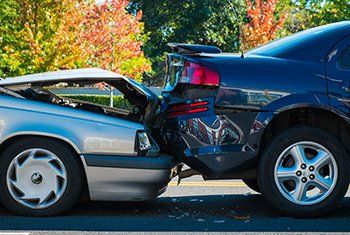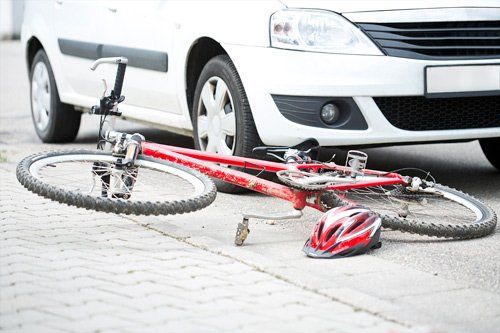Blog

By and large, medical professionals are competent, caring, and willing to go above and beyond for their patients. When you visit the doctor's office, you usually know what to expect. Most doctors provide the appropriate level of care.
Unfortunately, this isn't always the case. In an average year, the United States sees more than 1.3 million injuries - and 180,000 deaths - resulting from medical negligence.
The effects of a surgical error, misdiagnosis, or prescription mix-up can be devastating to you and your family. The situation can also feel overwhelming if you're not sure where to turn for help. Your first instinct may be to contact the health care provider, but this may not be your best course of action. Any contact you have with the potential defendants can be used against you, if and when you file suit.
With that in mind, here are some steps you should take if you suspect you may be a victim of medical malpractice.
Determine the Strength of Your Case
While your attorney will eventually decide whether or not to move forward with a lawsuit, it's helpful to understand what is - and isn't - considered malpractice.
- If a court of law determines that a doctor hasn't met the medical standard of care for his or her specialty, it's considered negligence.
- If this negligence is determined to have caused the patient undue injury, it's considered malpractice.
Not all doctor errors are considered to be negligent. Some procedures are inherently risky, and some diseases are commonly misdiagnosed. When you consent to have certain procedures done, you are consenting to some level of risk involved with the procedure. In these cases, the error would most likely not be considered negligence, but an accident - and, therefore, not legitimate grounds for a malpractice suit.
If your case meets these standards, you will still need to show that the adverse effects you've experienced were directly caused by the doctor's negligence, as opposed to an underlying condition or some other factor.
Document Everything
Was the hospital particularly busy the day of your surgery? Did the doctor seem overtired or rushed when they made the diagnosis? These details may seem unimportant, but the more information you can provide to the attorney, the stronger your case will be.
Be sure to keep records of all doctor's visits, prescriptions, and any other details that may be relevant to your case. You might even find it helpful to keep a journal to document the incident and its effects. Also, you'll want to request your medical records from your provider. This will help determine if the doctor properly documented your experience, and reveal any discrepancies or omissions. Note that your health care provider may charge a small fee to obtain your records and keep in mind that you needn't give a reason for requesting your request.
Find an Attorney
If you believe that you're the victim of medical malpractice, one of the best steps you can take is to find and retain an attorney that specializes in this type of law. A good attorney will help guide you through the process, and provide you with some much-needed peace of mind.
Finding the right law firm can make a real difference in the outcome of your case. If you retain a lawyer from a firm with a successful reputation for retrieving damages, the defendant may be inclined to try and negotiate a settlement rather than risk losing a trial. Be sure to research the malpractice firms in your area before settling on an attorney.
If you think a doctor or hospital has injured you or a loved one and you think you have a medical malpractice case, the Law Offices Of Kurt A. Franke
can help.

Slip and fall accidents are quite common in the United States. In fact, these accidents account for more than 1 million emergency room visits. Common injuries that result from slip and fall accidents include hip fractures, traumatic brain injuries, ankle sprains, and spinal cord injuries. If you were injured in this type of accident, taking good care of yourself is essential for a speedy recovery.
Here are seven effective ways to recover from a slip and fall accident.
1. Seek Treatment From a Doctor
The first thing you have to do is seek medical attention for your injury. A doctor will use diagnostic tools, like CT scans or MRIs, to correctly diagnose your injury. Once a doctor knows what type of injury you are dealing with, they can recommend the appropriate treatment plan. For example, if you suffered a major head injury, then they may suggest surgery.
If you have any questions about your treatment plan, then do not be afraid to ask your doctor. For example, you may want to find out how long the treatment will last and if there is any pain associated with it.
2. Follow Your Doctor's Instructions
To successfully recover from your injury and avoid complications, it is crucial to follow your doctor's instructions. For instance, if they tell you to avoid strenuous exercise and avoid drinking alcohol, then you should listen. You should also attend follow-up appointments with your doctor to make sure you are recovering properly.
3. Manage Your Pain
Whether you broke your leg or fractured your ribs during a slip and fall accident, you may experience some pain during the recovery process. Luckily, there are many things you can do to alleviate pain and improve your comfort - such as applying ice to the affected area, meditating, and getting massages. If your pain still does not subside, then your doctor may prescribe pain medication.
4. Eat a Nutritious Diet
If you are recovering from a slip and fall injury, what you eat is crucial to your health. To reduce inflammation throughout your body, eat anti-inflammatory foods - like avocados, salmon, nuts, and olive oil. Stay away from foods that increase inflammation, like processed foods and vegetable oils.
It's also important to include protein, complex carbs, fruits, and vegetables in your diet.
5. Consider Physical Therapy
If you have suffered a slip and fall accident, you may not have as much mobility and strength in your joints as you did before. Physical therapy can help you regain that mobility and strength so that you can resume your normal activities. Your doctor may ask you to do some physical therapy exercises at home to speed up your recovery.
6. Get Plenty of Sleep
Getting adequate rest every night becomes even more important if you are recovering from a slip and fall injury. When you sleep, your body has a chance to repair itself. Aim to get seven to eight hours of sleep every night. If you are having trouble falling or staying asleep, try doing something relaxing before bedtime, like meditating or taking a hot bath.
7. Let Your Doctor Know if Your Symptoms Are Not Improving
If your symptoms do not seem to be improving, there may be something wrong. For example, if your swelling isn't going down or you are in a great deal of pain, then you should make an appointment with your doctor. They can evaluate your condition and decide on the best course of action.
If your slip and fall accident was the result of someone else's negligence, then you may be entitled to compensation. Contact the Law Offices of Kurt A. Franke
to discuss your case.

In the United States, about 3 million people are injured in car accidents each year. Many of these auto accident victims are so shaken up after the incident that they are simply thankful to be alive. Even though they may feel some discomfort after the event, they may forgo offers for medical treatment, believing that their pain will quickly subside.
Here are a few things accident victims should consider before refusing medical care.
Healing Takes Time
The assumption that a painful injury from an auto accident will heal quickly is actually a misconception. Soft tissue injuries can take up to a year to fully heal. During the healing process, the tissues may undergo the following stages:
Inflammation: The acute inflammatory stage generally lasts about 72 hours and occurs immediately after the injury takes place.
Regeneration: The regenerative phase occurs after the inflammation subsides and may last up to 8 weeks after the initial injury.
Remodeling: The remodeling phase is the final stage of the soft-tissue healing process and can last up to 12 months after the injury's onset.
To ensure that the healing process progresses as it should, the accident victim should remain under the care of a physician throughout the recovery. The medical provider can review the progress of the victim and make changes to the treatment plan as needed.
Symptoms May Not Be Immediately Present
Some victims experience little discomfort immediately after an accident. Nevertheless, a delay in painful symptoms does not mean that an injury is insignificant.
Here are several types of accident injuries that often have delayed symptoms:
- Back pain from a pulled muscle, strain or herniated disc
- Shoulder or neck pain from whiplash or a spinal injury
- Headaches from stress, whiplash, a brain injury or a concussion
- Abdominal discomfort from soft-tissue injuries
- Psychological pain and suffering from post-traumatic stress
As soon as an accident victim suspects that he or she has been injured, it is best to seek medical care. The determination of the type and extent of the injury should be left to a medical professional. A prompt diagnosis can help ensure that the victim gets the help that is needed for a full recovery.
Delaying Treatment Could Jeopardize Compensation for Damages
The insurance company of the person at fault in the accident might look for ways to avoid compensating the victim for damages. As a result, a delay in treatment is often viewed with suspicion. The insurance company representatives may assume the following:
- The injury is not as severe as the victim claims.
- The victim sustained an injury through a separate event that was not related to the accident. The victim is only seeking treatment to increase the amount of potential compensation.
By receiving medical care immediately after an accident, the victim helps provide proof of his or her injuries. A Medical personnel will take detailed notes concerning the diagnosis and treatment of an accident victim's injuries, and it is harder to dispute the treatment findings of a medical professional who treated an accident victim immediately following the incident.
Visiting the Emergency Room Just Once May Not Be Enough
Even if an accident victim is seen in an emergency room, the victim may need to seek additional medical care, such as physical therapy. If the accident victim does need to go to the emergency room, the staff is trained to treat medical emergencies and will help the victim. The seriousness of a head or spinal cord injury may not be immediately apparent without proper testing.
Although a victim may not feel as though he or she is seriously hurt, it is best to refrain from making statements or signing documents denying physical injury. The statements can be used to justify a refusal to compensate for damages.
Undergoing a thorough physical evaluation after an accident is often wise, regardless of the symptoms that may or may not be present.
If you have been involved in an accident, contact the Law Offices of Kurt A. Franke to schedule a consultation.

As bicycling becomes a more popular method of commuting, accidents between cars and bikes have inevitably risen. These collisions leave the bicycle rider especially vulnerable and can lead to severe injuries and damages. If you have recently been struck by a car while cycling or simply worry about your daily commute, you need to know how to protect yourself both physically and legally. Follow these five steps after an accident to increase your odds of receiving just compensation through a personal injury case.
Looking After Yourself and Others
Of course, the first priority after any accident is to make sure that you and everyone involved are safe. Check that both you and the driver are not in need of immediate medical attention and wait for authorities to arrive. If you've already experienced a bicycle accident, you have likely gotten through this step on your own. You may, however, only begin to notice aches and pains a day or two after the crash. Don't hesitate to visit a doctor and undergo a physical exam, even if your injuries don't seem serious. Not only can it save you from an unnoticed emergency, but it can also provide documentation for any future legal case.
Gathering Evidence and Witnesses
While at the site of the collision, it helps to document as much about the incident as possible. First get the driver's basic information and insurance number. Photographs of the position and state of your bike, and the same for the car, can help courts picture the crash as you describe it. This is also the time to determine witnesses and take their statements or contact information. Police responding to the scene will help you with this process, particularly if you need medical attention. The more evidence you have to support your case as the injured party, the better your chances of winning a fair judgment.
Taking Your Bike in For an Assessment
Once you have recovered from your ordeal, it's time to assess the property damage. Take your bike into a professional repair shop Do this as soon as you safely can to establish a reliable trail of documents. This is also the time to reach out to your insurance agency, if covered, and notify them of the accident. Your insurance company may request that you take the bike to a specific shop for appraisal. Request that the repair assessment be put down in writing and signed by a credible expert to boost your claim.
Documenting Your Mental Health
Car accidents are never pleasant, but bicycle accidents carry additional risks and traumas. It's common for victims of crashes to suffer from flashbacks and anxiety in the aftermath of a crash. If you are losing sleep or find it difficult to function in daily life, you may be experiencing what the law refers to as 'emotional distress.' This charge reflects the mental damages that can be just as harmful as physical injuries. Keep a running list of any problems you experience and seek the help of a mental health professional to overcome them. Keeping up with these appointments will demonstrate ongoing need and a commitment to recovery.
Considering Your Eligibility for Personal Injury
Even with insurance, you may find that your bills are still stacking up. You may suffer from trauma and lasting injury, both common side-effects of bicycle accidents. In some cases, you may not be able to work for some time, if ever, as a result of one person's poor decision. And all of this assumes that you have received insurance payments, which is never guaranteed. Whenever this applies to you, it may be wise to pursue a personal injury claim to recover your losses. At the Law Offices of Kurt A. Franke, we recognize your pain and would like to help you seek justice. Give our office a call today to review your case and begin putting a plan for your future together.

Many homeowners have people coming into their homes for various reasons throughout the day. While interacting with these individuals can add variety to your life, it's important that you realize your responsibilities as a homeowner when it comes to keeping individuals within your home safe.
Property owner negligence is a type of personal injury lawsuit that can be brought against a homeowner for injuries an individual sustained while on that homeowner's property. In order to protect yourself from becoming a defendant in a property owner negligence suit, here are three things that you need to know about your duties when it comes to preventing injury on your property.
Sometimes a Warning Constitutes Sufficient Care
If there are areas on your property that could be considered dangerous (landscape hazards, remodel zones, etc.), you have a duty to warn your guests about the potential dangers of these hazards in order to keep them safe.
The law defines a licensee as an individual that has been invited onto private property for social reasons. Licensees can include your family members and friends, as well as religious solicitors or other individuals seeking to share social messages with you.
When determining liability for injuries sustained by a licensee, the court will examine whether or not you exercised reasonable care in providing a sufficient warning for your guests regarding dangerous conditions on your property. If this standard for reasonable care is met, you will not be liable for damages that occur as a result of a licensee's injury.
Business Relationships Increase Liability for Homeowners
Many homeowners establish business relationships with individuals on their property without even realizing it. If you are planning to have a contractor complete upgrades to your home, if you want to host a garage sale or if you call a utility worker to make repairs, these individuals are all considered business invitees.
To prevent yourself from being liable for injuries that a business invitee may sustain on your property, you must adhere to a higher level of care than the reasonable warning standard that applies to licensees. In addition to warning business invitees of potential danger, you must take action to prevent these hazards from posing a risk in the first place.
Regular inspection of your property coupled with active efforts to repair any damages that could result in injury will help you prove to the court that you met your legal obligation of maintaining your property so any reasonable person would consider it safe.
There Are Instances Where Liability Isn't an Issue
Homeowners are not liable for maintaining the safety of all individuals who come onto their property, only the individuals who have been invited to do so. If an individual decides to trespass on your private property and sustains an injury in the process, they cannot pursue legal action against you.
The law deems that property owners are under no obligation to provide for the safety of uninvited individuals, so you would be safe from the threat of a property owner negligence suit in the event a trespasser is seriously injured while illegally accessing your property.
Understanding how liability is determined in a property owner negligence suit can be beneficial. Once you are able to identify how the law classifies various types of individuals who might access your property in the course of a day, you will be equipped with the knowledge needed to protect yourself and your guests from harm.
If you are currently facing a property owner negligence lawsuit, contact the Law Offices of Kurt A. Franke for help in determining whether or not you are liable for damages.

If you are a business owner in the Reno, Nevada, area, you will most likely enter into many contracts. They will probably include confusing or flowery language, but most contracts boil down a few key ingredients. Make sure you know what you can and can’t do in contract negotiations.
Quid Pro Quo
The most important component to a contract is “quid pro quo.” This is a Latin phrase meaning “something for something,” and sets the boundaries for contracts. Basically, the parties involved exchange good or services for some good, service or payment.
Agreement
For a contract to be valid both parties must agree to the exchange. This is usually noted by signatures from both parties to clarify the difference between a full agreement and preliminary negotiations.
Documentation
Except in some special cases, most of which don’t apply to business contracts, contracts must be in writing. This is to make sure the contract is provable and upheld in court.

If you are involved in an accident while on a bicycle, you are more likely to experience an injury than if you were in a vehicle. However, in the past 30 years, deaths from bicycle accidents have decreased by 26 percent. This is in part due to the increase in wearing proper safety gear such as helmets.
If you live in Nevada, it is important to be extra cautious when riding your bicycle. The bicycle accidents that occur in this state are higher than the national average and continue to rise. Here are some statistics regarding bicycle accidents in Nevada.
- 75 percent of fatal bicycle accidents occur in large cities.
- 84 percent of fatalities from bicycle accidents are men over the age of 20.
- 19 percent of all fatal accidents involve women, while the remaining 81 percent involve men.
- 80 percent of accidents occur during the day; however, most fatal accidents occur at night.
- 73 percent of serious bicycle accidents occur due to an error by the driver or bike rider.
Riding a bicycle is a great way to exercise and can be a convenient mode of transportation. However, it is important to be aware of your surroundings and follow proper safety guidelines. You should always wear a helmet and reflective gear, especially at night. Also, make sure you are following the rules of the road. Call the Law Offices of Kurt A. Franke to learn more about what to do if you are involved in a bicycle accident or if you need legal representation for your personal injury case.

